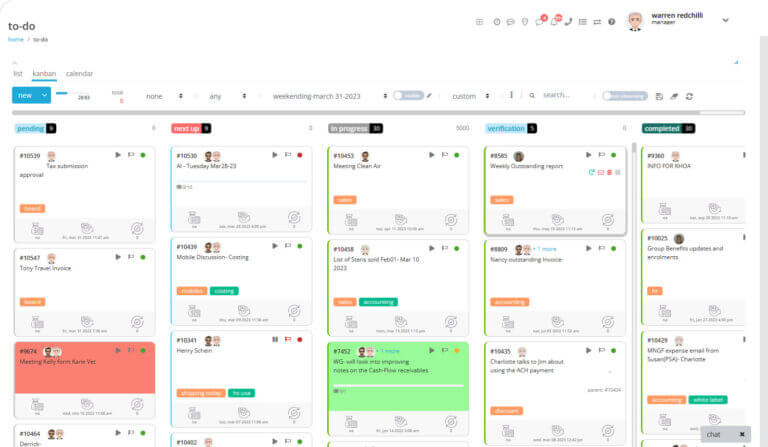
Top 10 Signs Your Business Needs Better Task Management
In today’s fast-paced, digitally-driven world, effective task management can be the difference between a thriving, organized business and one that constantly struggles to meet deadlines and satisfy customers. Whether you’re a small startup or a growing mid-sized enterprise, the ability to manage tasks efficiently impacts everything from employee morale to customer satisfaction and bottom-line profits.
If you’re wondering whether it’s time to rethink your task management strategy, here are the top 10 signs that your business needs better task management—plus how a Business Management System (BMS) can streamline your operations and boost productivity.
1. Missed Deadlines Are Becoming the Norm
If projects are consistently behind schedule, it’s a clear sign that your current task management methods aren’t working. Missed deadlines not only frustrate clients but also cause internal stress, leading to a ripple effect of delays in other projects.
How a BMS Helps:
A business management system centralizes all task assignments, timelines, and progress tracking. With automated reminders and Gantt chart views, your team always knows what’s due and when.
2. Lack of Visibility Into Who’s Doing What
Ever asked your team who’s responsible for a task, only to be met with blank stares or conflicting answers? Without clarity, tasks fall through the cracks or get duplicated, wasting time and resources.
How a BMS Helps:
A good BMS provides a transparent view of who is assigned to each task, their progress, and their workload. This eliminates confusion and allows managers to balance assignments more effectively.
3. Communication Breakdowns Are Frequent
When team members rely on emails, chats, and verbal updates to manage tasks, information inevitably gets lost. Miscommunication leads to errors, rework, and strained relationships.
How a BMS Helps:
With built-in communication tools and task-specific comment threads, a BMS ensures that all relevant discussions are centralized and accessible. Everyone stays on the same page, reducing misunderstandings.
4. You’re Still Using Spreadsheets for Project Tracking

While spreadsheets are great for data analysis, they’re not ideal for tracking tasks and managing workflows. They require manual updates, lack collaboration features, and don’t scale well.
How a BMS Helps:
A BMS offers dynamic, real-time task tracking features with collaboration tools, notifications, and file attachments. It replaces static spreadsheets with interactive dashboards and live updates.
5. Team Morale Is Low Due to Overwork or Confusion
When employees are unclear about priorities or are constantly overloaded with unbalanced workloads, morale suffers. This can lead to burnout, high turnover, and a toxic work environment.
How a BMS Helps:
A BMS helps visualize workloads and allocate resources evenly. Team members can view priorities, upcoming tasks, and deadlines clearly, reducing stress and empowering them to manage their time effectively.
6. Customer Satisfaction Is Declining
Unmet deadlines, poor communication, and errors trickle down to your customers. If complaints are increasing or client retention is dropping, poor task management might be to blame.
How a BMS Helps:
BMS platform offers client portals, progress reports, and timelines that can be shared externally. They help ensure that deliverables are met on time and that clients are always kept in the loop.
7. No Way to Measure Performance or Productivity
If you can’t quantify how your team is performing, it’s impossible to improve. Relying on gut feelings or anecdotal evidence to assess productivity leads to misinformed decisions.
How a BMS Helps:
With built-in analytics, a BMS provides insights into task completion rates, average project duration, employee efficiency, and more. You get the data needed to make strategic decisions and optimize workflows.
8. Project Scope Constantly Creeps

Scope creep occurs when new tasks are added without adjusting timelines or budgets. Without a formal process for managing and approving changes, projects quickly spiral out of control.
How a BMS Helps:
A BMS helps define task scopes and allows for structured change requests. You can log, review, and approve modifications with full visibility into their impact on timelines and resources.
9. Scaling Is a Nightmare
As your business grows, managing more clients, employees, and projects with manual processes becomes unsustainable. You’ll find yourself buried in tasks without the infrastructure to handle them.
How a BMS Helps:
A BMS is designed to scale with your business. Whether you grow from 5 to 50 or 50 to 500 team members, the system keeps workflows streamlined, organized, and automated—supporting sustainable growth.
10. You’re Spending Too Much Time on Admin Work
If you or your managers are buried in repetitive admin tasks like sending reminders, updating spreadsheets, or checking in on statuses, that’s time not spent on strategic growth.
How a BMS Helps:
Automations are one of the biggest advantages of a BMS. Automatically assign tasks, send deadline alerts, generate reports, and track progress—all without manual intervention. It saves hours of time every week.
What Exactly Is a Business Management System?
A Business Management System (BMS) is a comprehensive software platform that combines task management, project planning, CRM, document management, and communication tools into one integrated interface.
Unlike single-purpose tools like Trello or Asana, a BMS provides a broader range of capabilities that help unify different business functions under one roof.
Key Features May Include:
- Task and project tracking
- Time and resource management
- File sharing and document storage
- Internal chat and team messaging
- Performance analytics and reporting
- Client management and communication portals
Final Thoughts: Better Task Management Is a Strategic Advantage
When your business struggles with task management, it doesn’t just affect day-to-day operations—it impacts your brand, employee satisfaction, client relationships, and ability to grow. A Business Management System can transform chaos into clarity, replacing missed deadlines, confusion, and inefficiencies with structure, accountability, and agility.
If you recognize even three or more of the signs listed above, it’s probably time to consider implementing a BMS. Think of it not just as a software investment, but as a long-term commitment to improving your business’s performance and resilience.
Better task management isn’t a luxury—it’s a necessity.
Start your 90-day free trial today and experience the power of a business management system firsthand.
Frequently Asked Questions
If your team frequently fails to meet project deadlines, deliverables are delayed, or deadlines are consistently being pushed — it’s a strong signal that your current task-tracking system isn’t working.
When tasks aren’t clearly assigned — people don’t know who owns a task or what the current status is — work gets duplicated or forgotten. Good task management ensures everyone knows their responsibilities and avoids wasted effort.
Spreadsheets and informal methods are often static, hard to update, prone to errors, and don’t support easy collaboration or tracking — which leads to misunderstandings, lost tasks, and inefficiencies.
Yes. If workloads are unclear or unbalanced, or team members feel overloaded because there’s no clear prioritization, it can lead to confusion, stress, lower morale, or burnout. Better task management helps balance workload and establish clarity.
Missed deadlines, communication breakdowns, and inconsistent delivery due to poor task tracking can frustrate clients. Over time, this may erode trust and lead to loss of customers — so effective task management helps ensure reliability and timeliness.
If you find yourself juggling many projects, experiencing frequent delays, facing communication issues, struggling with visibility of tasks/responsibilities, or spending too much time on admin and coordination — it indicates that an informal approach has outgrown its usefulness. That’s usually the right time to adopt a structured task-management solution.




